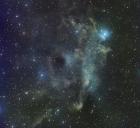Howdy, Stranger!
It looks like you're new here. If you want to get involved, click one of these buttons!
In this Discussion
LBN688 - A processing challenge for me
Adam,
I imaged the above target last night and found it very challenging to process. It is rarely imaged, but it reminds me a bit of NGC1333... which you walked us through last month. I used some of the techniques described there... but feel that I'm still missing something.
I think that the data is fairly good. I used my 8" EdgeHD with the HyperStar attached (F/1.9) to a ASI533MC Pro in Bortle 5 skies with average seeing/transparency. I only used a UV/IR Cut filter.
I'm a relatively new student of yours, but feel I'm am really learning a lot. Very thankful! It would be great if you, or anyone else, would show me what I'm missing!
Here are the links to the integrated XISF file and my final JPEG.
Thanks!
Ron Clanton


LBN688.jpg
2889 x 2640 - 7M

Comments